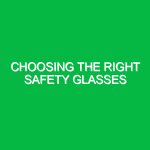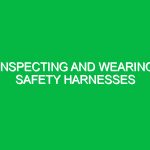Introduction
The correct use of hearing protection is not just a guideline; it is a fundamental aspect of workplace safety and health. In various industries, particularly those involving heavy machinery, construction, or music, exposure to high noise levels can lead to irreversible hearing damage. This issue is not merely a personal concern—it affects productivity, workplace morale, and, ultimately, the bottom line. Understanding the significance of hearing protection within the Health, Safety, and Environment (HSE) domain is essential for employers and employees alike.
In this article, we will delve into the intricacies of hearing protection, identify potential hazards, and discuss safety precautions and best practices. By the end, you will have a well-rounded understanding of how to effectively incorporate hearing protection into your workplace safety protocols.
Potential Hazards and Risks Associated with Noise Exposure
Noise-induced hearing loss (NIHL) is a leading concern in many workplaces. According to the World Health Organization, approximately 1.1 billion young people are at risk of hearing loss due to exposure to loud sounds. But what are the specific hazards associated with improper or inadequate hearing protection?
Types of Noise
Noise can be categorized into continuous, intermittent, and impulse noise. Continuous noise, such as that from machinery, can lead to gradual hearing loss over time. Intermittent noise, like that from construction work, poses risks during peak exposure. Impulse noise, such as gunfire or explosions, can cause immediate damage to hearing.
Health Risks Beyond Hearing Loss
While hearing loss is the most evident risk, it is essential to understand that excessive noise exposure can lead to other health issues. These can include:
- Tinnitus: A ringing or buzzing in the ears that can become chronic.
- Increased Stress Levels: Constant loud noises can elevate stress hormones, leading to anxiety and hypertension.
- Impaired Communication: Poor hearing can lead to misunderstandings, accidents, and decreased productivity.
For instance, a construction worker might miss crucial verbal instructions due to noise, leading to potential safety risks. Such scenarios underscore the importance of proper hearing protection.
Best Practices for the Correct Use of Hearing Protection
To effectively safeguard against the dangers of noise exposure, implementing best practices in hearing protection is vital. Here are several actionable strategies:
1. Conduct a Noise Assessment
Before selecting hearing protection, a comprehensive noise assessment should be conducted. This involves measuring noise levels in different areas and identifying sources of excessive noise. For example, a factory might have specific zones where machinery generates noise levels above 85 decibels (dB), the threshold at which hearing protection is advised. Engaging a safety professional to perform this assessment can provide valuable insights.
2. Select the Right Type of Hearing Protection
There are various types of hearing protection available, including:
- Earmuffs: These cover the entire ear and provide significant noise reduction, making them suitable for continuous noise environments.
- Earplugs: These fit directly into the ear canal and are often more comfortable for prolonged use. They can be disposable or reusable.
- Custom-fitted Devices: For those frequently exposed to high noise levels, custom hearing protection may be the best option. These devices are molded to an individual’s ear shape, ensuring maximum comfort and effectiveness.
Choosing the correct type of hearing protection should be based on the specific noise hazards identified in the workplace.
3. Ensure Proper Fit and Usage
The effectiveness of hearing protection significantly depends on how well it fits. A poorly fitting earplug or earmuff may provide inadequate protection. Here are some tips for ensuring proper fit:
- For earplugs, roll them into a thin cylinder before insertion, then hold the ear up and back to open the ear canal for a snug fit.
- For earmuffs, ensure that they fully cover the ears and that the headband is adjusted for comfort.
Regular training sessions can help employees understand the correct usage and fitting techniques. For instance, a manufacturing plant might hold quarterly workshops demonstrating the correct way to wear ear protection, reinforcing the importance of proper fit.
4. Regular Maintenance and Replacement
Hearing protection devices need to be maintained and replaced regularly. Disposable earplugs should be used only once, while reusable earplugs and earmuffs should be cleaned according to manufacturer instructions. Regular checks for wear and tear are essential, as damaged devices may not provide adequate protection. For example, a frayed earmuff padding can lead to discomfort and reduced effectiveness.
5. Encourage a Hearing Conservation Program
A robust hearing conservation program not only emphasizes the use of hearing protection but also educates employees about the risks associated with noise exposure. This program should include:
- Regular training sessions on the importance of hearing protection.
- Monitoring noise levels and providing feedback to employees.
- Encouraging employees to report any issues with hearing protection devices.
Such programs foster a culture of safety. For example, a construction firm that actively engages its workers in safety discussions often sees higher compliance rates with hearing protection protocols.
Regulations and Standards Governing Hearing Protection
In many countries, regulations outline the requirements for hearing conservation programs in workplaces with noise hazards. In the United States, the Occupational Safety and Health Administration (OSHA) mandates that employers provide hearing protection when noise levels exceed 85 dB. Additionally, the National Institute for Occupational Safety and Health (NIOSH) provides recommendations for exposure limits and hearing conservation strategies.
Internationally, standards set by the International Organization for Standardization (ISO) and the European Union regulations also emphasize the need for hearing protection in specific industries. These regulations serve as essential guidelines for companies aiming to ensure employee safety and compliance.
Conclusion
The correct use of hearing protection is not merely a checkbox on a safety compliance list; it is a crucial component of a broader health and safety strategy. By recognizing the potential hazards associated with noise exposure and implementing best practices for hearing protection, employers can create a safer workplace environment. Investing in proper hearing protection, conducting regular training, and adhering to regulatory standards are all essential steps toward safeguarding employees’ hearing health.
Ultimately, fostering a culture of awareness and accountability regarding hearing protection will lead to healthier, more productive workplaces. Whether you are an employer or an employee, understanding the importance of hearing protection is the first step in reducing the risks of noise exposure and ensuring long-term well-being.


